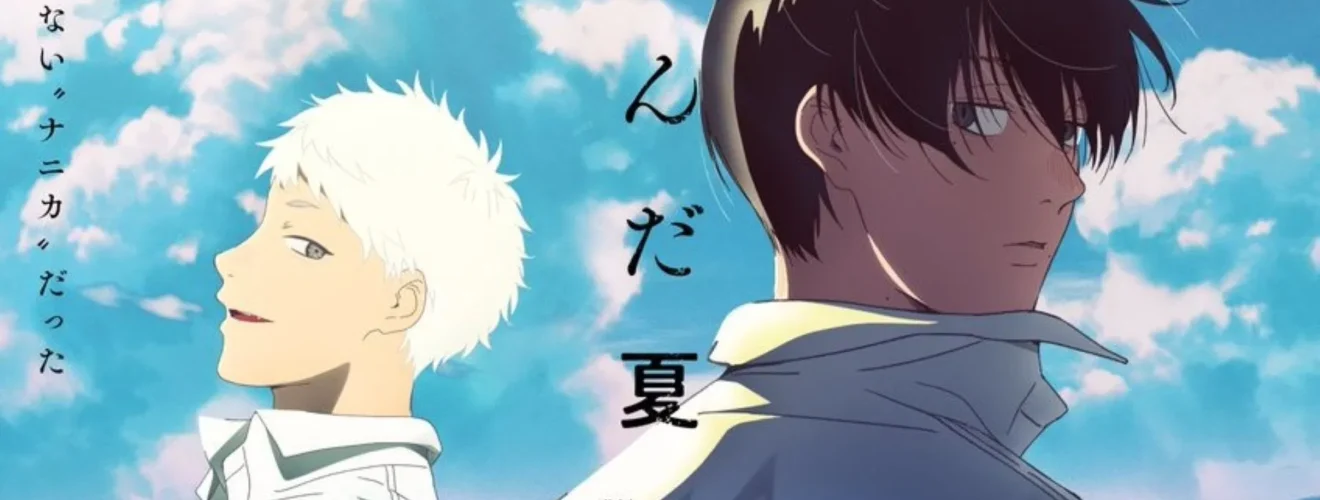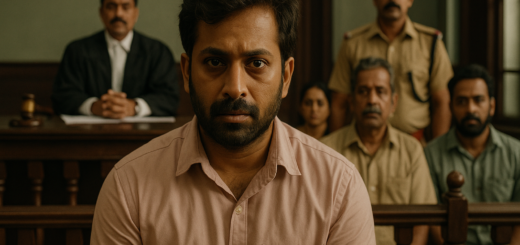The Summer Hikaru Died Review: Love, Loss & Horror

From the first moment I pressed “play,” I felt the weight of summer heat and nostalgia settle on me. The setting feels familiar: narrow alleys between old houses, cicadas droning above, long shadows at dusk. But something about the visuals—the way the light fractures, the stillness in faces—immediately unsettles. This show doesn’t scream its horror; it lets it creep in.
I meet Yoshiki and Hikaru as ordinary teens in a quiet rural town. They share shy glances, idiosyncrasies, and a closeness that seems simple but layered. Then Hikaru vanishes on a mountain trek. Months later, he returns—or someone occupying his body does. Yoshiki senses the shift. As the series progresses, I watch him gamble with denial, hope, fear.
By the end of the season, I feel disoriented, haunted—not because I saw something shocking once, but because the echoes of those days remain. The finale’s beach scene lingers with me, refusing closure. This isn’t “horror-lite” or just queer subtext. It makes you live in the ambiguity, the ache, and the danger of misplaced love.
Narrative & Pacing: Slow-Burn, but Full of Pressure
The story unfolds methodically. The first few episodes focus on character, memory, and the small ruptures in life: Hikaru returns, but something is off. Conversations twist, glances linger too long, and sensory detail—sound, color, pauses—works like a sixth character. I sometimes had to lean forward, waiting for some crack in the illusion.
Midseason, the tension ratchets up. I felt like I was strapped to Yoshiki’s point of view. Every strange behavior from “Hikaru”—every blank stare, every refusal or overly intense reaction—made me question: is this still the same person I knew? At the same time, the town’s undercurrents darken. Small tragedies, rumors, disappearances—all begin to tie in.
The pacing rarely rushes. One might call it languid. But that deliberate pacing works—it gives horror room to fester. Episode 6, in particular, impressed me. The show sidesteps jump scares and instead lets silence scream. Classroom scenes grow heavy; unspoken tension feels like a physical weight. Darkness doesn’t appear—darkness is already inside. (I read a review noting exactly that: “Silence grows louder as Yoshiki’s reality starts to unravel.”)
Yet, the slow build has risks. A few episodes felt stretched. In those stretches, I craved more payoff or more context. Secondary characters sometimes hover in the background without full arcs. But on balance, I accept that trade: the emotional and atmospheric tension feels earned.
Characters & Performances: Heart, Fracture, and Friction
The core of the show rests on Yoshiki and “Hikaru.” Yoshiki’s devotion, fear, and desperation form the strongest emotional axis. I see him oscillate between fragile hope and dread. I sympathize with his crumbling faith in what he thought he knew.
“Hikaru” sits in the hardest role: he must feel like Hikaru, but not be him. He speaks, moves, behaves like the old friend—and gradually reveals tiny glitches. His eyes, his pauses, the half-smile—those details feel calculated to keep me unsteady. The voice actors deliver that tension beautifully.
Secondary characters—Asako, Tanaka, others—fill the town’s texture. Some episodes give Asako moments of clarity and grief (especially toward the end when she and “Hikaru” revisit their shared history). I wish some of them had more screen time or stronger arcs, but in a story this tight, the focus must fall somewhere.
One of the most effective moments arrives in Episode 12 during the beach confrontation. Yoshiki, usually reserved, lashes out—he shoves “Hikaru” into the water, demands answers, fights for clarity. The conflicts land hard because by then I’ve invested in both of them, even as I know “Hikaru” might be dangerous. The dialogue, the rhythm, the emotion—watching them talk through pain and fear without fully trusting each other kills me.
Themes: Grief, Identity, Queer Intimacy, and the Monster Within
This series works thematically on many levels. On the surface, it’s horror: a doppelgänger, an entity, a horror creeping into everyday life. But underneath, it’s a study of grief and attachment. Yoshiki refuses to let go. He sees Hikaru—his memories, his body—and he clings to the possibility that what returned is still the same. That offers hope, but also fractures.
Identity becomes slippery. What defines a person? Memory? Intent? Body? Taste? When “Hikaru” claims to feel love, to remember joy, do those suffice to reclaim an identity? The show refuses to grant easy answers. In one moment, I think the entity might redeem itself; in the next, I see a coldness, an alien core that repels compassion.
Queer intimacy is never toyed with. Their relationship doesn’t exist as pure romance, but as a bond of deep emotional longing. The script never sanitizes Yoshiki’s need, his fear of loss, or his blurred line between love and possession. The show lets us feel that Y-H bond as something beautiful, grotesque, tender, dangerous. It challenges us to consider: when grief distorts love, how much do we protect—and how much do we harm?
Finally, there’s the idea of monsterhood. The show suggests that monsters don’t always lurk in caves. They might be inside us, woven through our demands, our internalization of fear. The entity that took Hikaru’s place feels monstrous, yet in scenes of warmth or tenderness, it also feels sympathetic. Who gets to be monster, who gets to be person?
One reviewer called it “a love story wrapped in a horror spiral.” That description nails it: this is not just a horror story or a queer story—it is horror through queer desire, horror through grief, horror through blurred selves.
Visuals, Sound, and Direction: Subtle, Brutal, Intimate
CygamesPictures and director Ryōhei Takeshita gamble on atmosphere over spectacle—and it pays off. The backgrounds are meticulous: rural houses, the mountain, shifting light. They embed small touches—windows half-lit, broken glass, reflections. The camera might hold on a face, linger, then slide away.
When gore arrives, it surprises. One scene early on distorts a face into something liquid and swirly; it jolts. But mostly the horror hides in distortions of perception: a glance too long, a mismatch in tone, a silence that stretches indefinitely.
Sound design and music contribute as much as visuals. Ambient hums, distant wind, crickets, low whispers—every silence feels loaded. The score surfaces rarely, often at emotional peaks or to accent a shift. In quiet scenes, the absence of sound becomes uneasy. I remember a classroom shot where the chatter stops, and I could feel my pulse; in another, a corridor’s echo makes me lean forward.
Directionally, the show handles perspective masterfully. Sometimes I see things through Yoshiki’s eyes; sometimes the frame isolates characters. The final beach scene plays in medium and close shots so I feel tension shifting in their breathing and faces. I feel them physically isolating even while standing side by side.
Highlights & Weaknesses: What I Loved and What I Wished
Highlights
- Emotional stakes over spectacle
The show doesn’t rely on flashy horror. It threatens your heart before your senses. - Ambiguity that sustains
I often paused thinking, “What is real here?” That tension kept me engaged throughout. - Powerful character moments
Episodes that let Asako or Tanaka face grief or confrontation work as much as the big battles. - Finale that refuses to tie loose ends
That beach argument felt real, raw, and incomplete—just like grief. - Queer intimacy without fetish
Their bond feels human, messy, and essential to the story rather than a trope.
Weaknesses / Reservations
- Pacing fatigue
A few episodes drag. In those stretches, the tension droops. Some scenes felt like filler, in danger of losing the viewer’s patience. - Underutilized supporting cast
I wanted more of Asako’s backstory, maybe more interference from the town. Some characters felt illustrative rather than fully alive. - No definitive moral stance
Because the show thrives in ambiguity, I’ve wrestled with frustration: I want explanations. But maybe that’s the point. Still, for viewers who favor closure, the show might feel too opaque. - Risk of uneven horror tone
Some episodes lean too far into quiet dread; occasionally, I wished for a harder jolt to remind me this was horror, not just melancholy.
Final Episode: A Beach, a Breaking Point
The finale delivers emotional clarity without closing doors. Yoshiki and “Hikaru” face each other on the beach—their argument builds, cracks, and fractures. Yoshiki’s anger, grief, demand to know collide with “Hikaru’s” insistence, defense, and evolution. At one moment, “Hikaru” chooses to return to the mountains. Then he discerns that he’s hurt Yoshiki despite his intent to “free” him. Asako and “Hikaru” share a renewed understanding: she can mourn the original Hikaru even as this new being struggles to justify existence. The beach scene works because it balances confrontation and tenderness, confusion and love. In the end, the image of Yoshiki and “Hikaru” walking along the shoreline haunts me—together, but uncertain.
I can’t precisely say if “Hikaru” dies or if his new form persists or what lies ahead. The show leaves that unresolved, and that lingering question is part of the haunting. Many critics praised the ending as a compositional and emotional high note—“a bow wrapped on top of an astounding debut season,” one reviewer wrote.
Reception, Impact, and What Lies Ahead
The anime premiered in July 2025. It quickly rose to the top of Netflix Japan’s charts—winning the “biggest summer anime hit in just two episodes.” The adaptation came into a fandom already invested, as the manga had sold millions of copies and earned critical acclaim. (By September 2025, the manga reached over four million copies in circulation.)
Critics highlighted the show’s success in transcending common traps of horror anime—neither a slavish panel-to-panel copy nor a hollow spectacle. One review labeled The Summer Hikaru Died as “a rare triumph” in the horror anime space. Another called it “the best horror anime in ages.”
In early reports, Episode 2 drew fan reaction for its sudden unsettling tone, calling it “wild and unsettling” and praising direction and audio design. Episode 6’s deeper focus on psychological horror proved that the show trusts subtlety and tension over shock.
After the season finale, studios did not wait. The anime got officially renewed for a second season—a decision made virtually the day after Episode 12 aired. A teaser trailer shows Yoshiki and Hikaru walking along a beach, when an unknown figure approaches and the screen fades to black. The new season promises to push the mystery further.
Additionally, the franchise plans a stage play adaptation in Tokyo for January 2026. Those expansions underscore how this property has grown from online cult manga to full multimedia phenomenon.
Personal Verdict: A Story That Haunts
I walked into The Summer Hikaru Died expecting a creepy but perhaps superficial horror. I left with something harder: a pain I carried for days. The show made me question what I would do if someone I lost came back, imperfectly. It forced me to feel the tension between holding on and letting go. It refused to let me rest.
Rating it? I’d give it a 9 out of 10. It loses a little in pacing here and there, and its supporting cast could get more depth. But its strengths—emotional risk, atmosphere, identity horror, queer intimacy—outweigh those flaws. It ranks among the most affecting anime I’ve watched in a long time.
I eagerly await Season 2. I want to know how Yoshiki and his changed friend will face what’s next—who must die, who must reconcile, and what monsters yet lurk. But even before the next chapter, this first season stands as a haunting portrait of love, grief, and the danger of refusing to let your ghosts rest.
Also Read – Festival Clash: Kantara’s Glory vs Sunny Sanskari’s Charm













